In today’s modern world digital menu boards seem to be everywhere, with more and more restaurants adopting them each day. Departing from traditional static menus, these dynamic electronic displays have become a common feature in restaurants, cafes, and even fast-food establishments. From real-time updates to engaging visuals and cost savings, these digital displays are proving to be more than just a modern convenience— but what exactly is a digital menu board? In this article we will discuss what a digital menu board is, what its benefits are, and what the common features of digital menu boards are.
What is a Digital Menu Board?
A digital menu board, or digital menu display, is a form of digital signage often used in restaurants, fast-food chains, and other food service businesses in place of traditional print signage. Instead of a physical menu board, a digital screen is used to display menu items, prices, and specials in a dynamic and visually appealing way. These screens can be wall mounted or ceiling mounted, with varying orientation options depending on location. Digital menu boards are often a statement piece, demanding the attention of customers from the time they walk in the door until they place their order.
This style of menu has become a staple in modern restaurants thanks to the convenience, flexibility, and ease-of-use it provides. Features like remote content management, dynamic video and image capabilities, and advanced content scheduling are common in this type of digital signage for restaurants.

What are the Components of a Digital Menu Board?
Similar to other styles of digital signage, digital menu boards are typically comprised of 3 main components:
- Digital Signage Hardware: The physical components that make up your digital menus, which can vary from company to company. While many restaurants typically use commercial grade tvs for menu boards, digital kiosks and touch screen kiosks are also used as well. In order to facilitate a network connection, digital signage hardware also typically includes a media player to receive and play your content.
- Digital Signage Software: This software is what enables the deployment, creation, editing, analysis, and scheduling of your content on your screens.
- Digital Signage Content: The content deployed on your digital signage, which can include a combination of images, video, text, audio, and more.
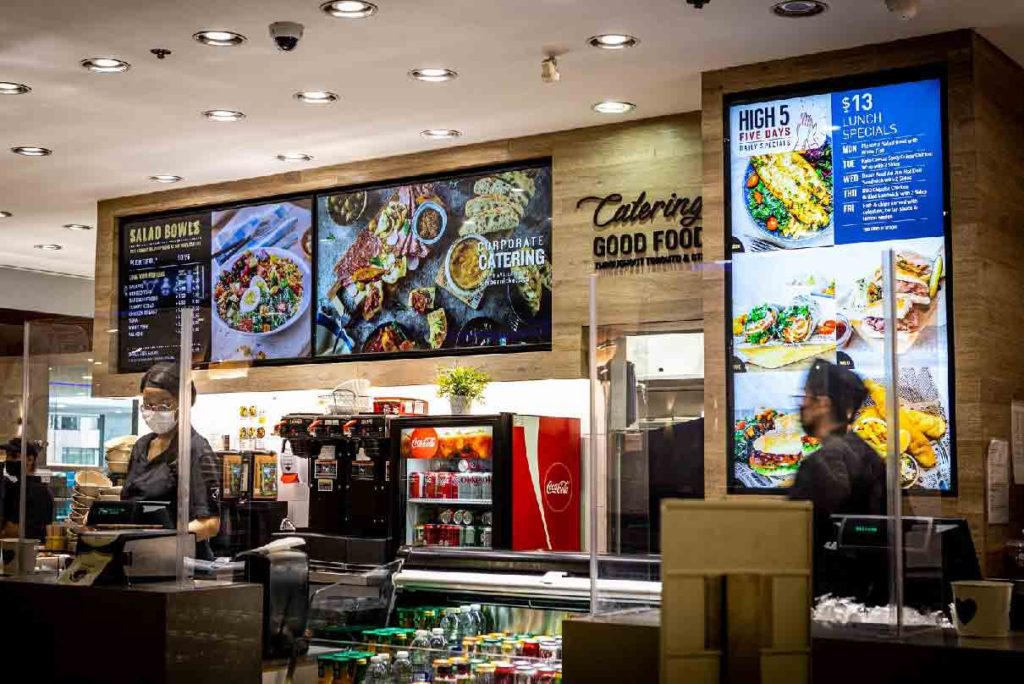
Who Benefits from Digital Menu Boards?
This style of modern digital menu has become so popular because it benefits both your customers and your restaurant. If it is a busy Saturday morning at your café and your line stagnates because customers cant read your menu ahead of time, what do you do? By leveraging modern technology and elevating your customers experience, your restaurant is the one who benefits the most in the end.
Here are just some of the benefits of digital menu boards:
- Digital menu boards are convenient! Update your menu in seconds from anywhere in the world and ensure the information displayed to your customers is always accurate.
- Digital menu boards keep your lines moving because people can easily read your menus ahead of time.
- Dynamic and moving menus keep your customers engaged while they wait, and is the perfect place to place relevant important updates.
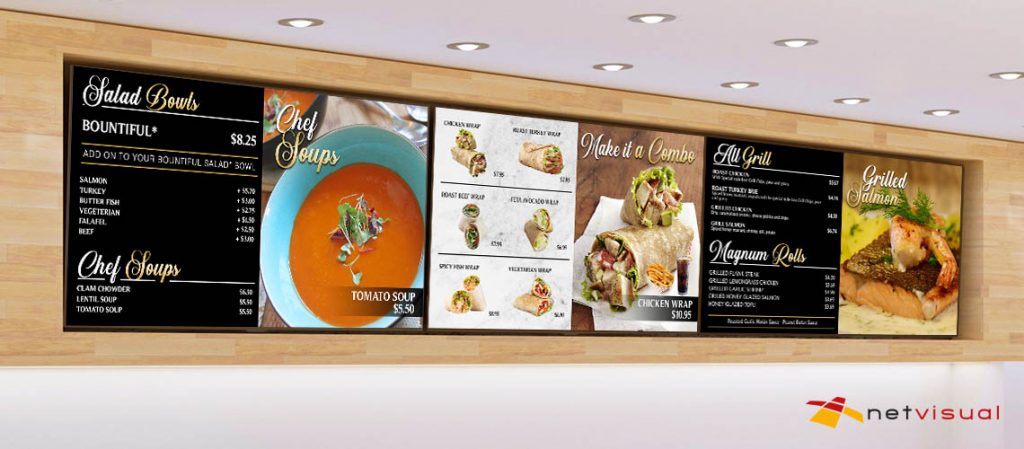
What are the Key Features of a Digital Menu Board?
- Dynamic Content: Digital signage allows for the easy creation and display of dynamic content for your menu boards. This content can include any combination text, images, videos, and animations, and can be customized to perfectly fit your branding.
- Remote Management: Digital signage providers offer a service which allows you to change, update, and schedule your content through an online portal instantaneously. This ensures your customers always have the correct information, and gives you full control as a restaurant owner.
- Dayparting Scheduling: Dayparting is a feature which allows you to customize the content shown to your customers and show different elements at different time. Separate breakfast, lunch, and dinner menus can be preprogrammed for specific times for example, or you can set a special menu or promo to show for a limited duration. This feature can also be used to A/B test new menu items or features as well.
- Cost-Effective Updates: Rather then printing new physical signage every time you need to make a change, digital signage allows you to make changes instantly and in a cost-effective manner. Are you out of a specific menu item? Easily note that on your menu board, or remove the item entirely until it comes back in stock as to not confuse customers.
- Upselling Opportunities: Digital menu boards can strategically promote your combos and specials by using dedicated dynamic content. Showcase relevant combos, add-ons, and special offers to increase your average transaction right at your point of sale.
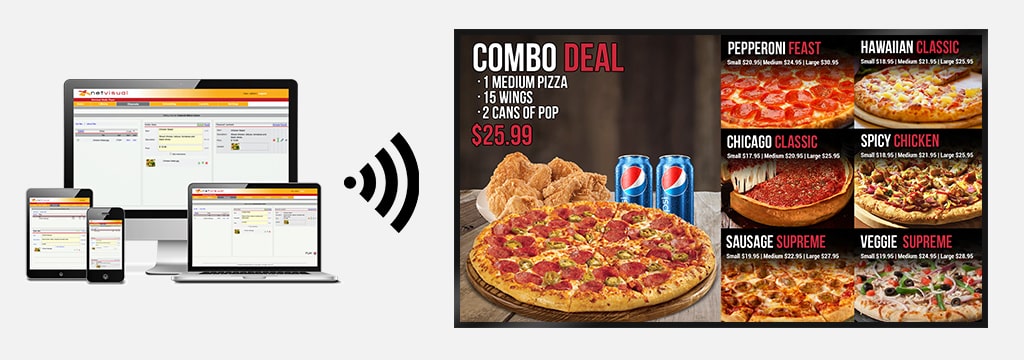
Related Posts
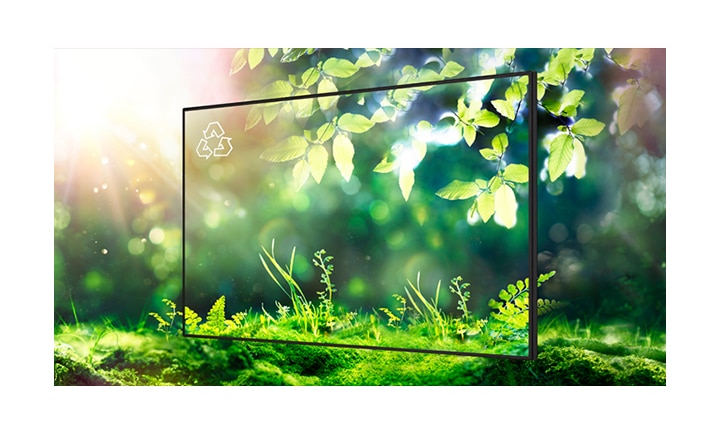
Sustainable Solutions: How Digital Signage Helps American Businesses Go Green
As sustainability becomes an increasing priority for modern American businesses, many business owners are looking for innovative ways to reduce their carbon footprint and adopt eco-friendly practices. Digital signage offers a compelling

Adapting Digital Signage for Seasonal Campaigns and Holiday Promotions
The holidays are fast approaching, which means many businesses are gearing up for their holiday marketing campaigns, promotions, and initiatives. There are many ways to use digital signage for holiday
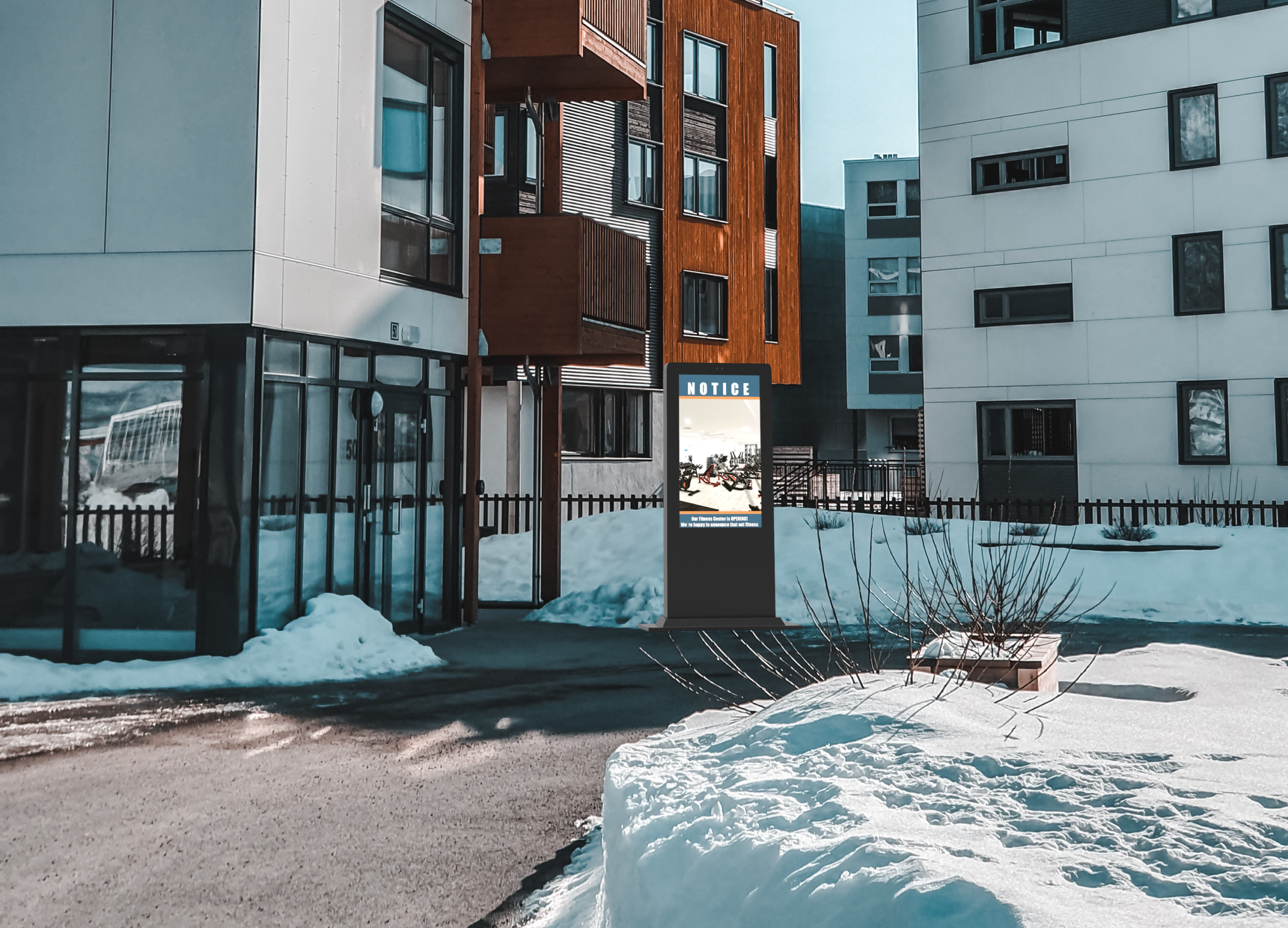
5 Ways to Use Outdoor Digital Signage
Outdoor digital signage has become extremely popular in recent years and for a very good reason. This incredible technology has seen numerous advancements that allow it to be a staple

The Future of Outdoor Digital Signage: Weatherproof Displays and Sustainability
The future of outdoor digital signage is increasingly shaped by two key trends: the need for weatherproof displays and the drive toward sustainability. These trends are driven by technological advances,

